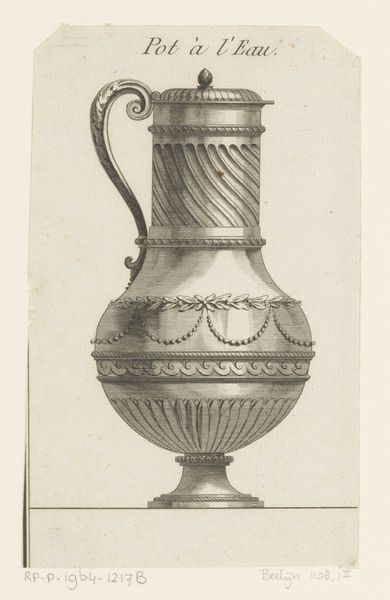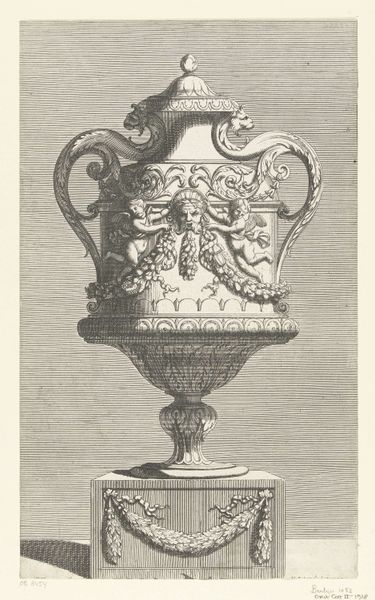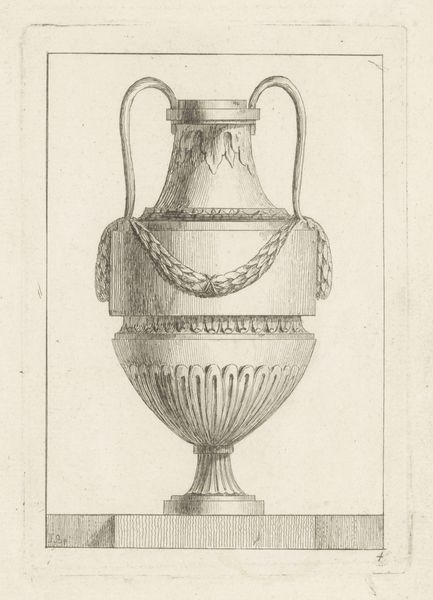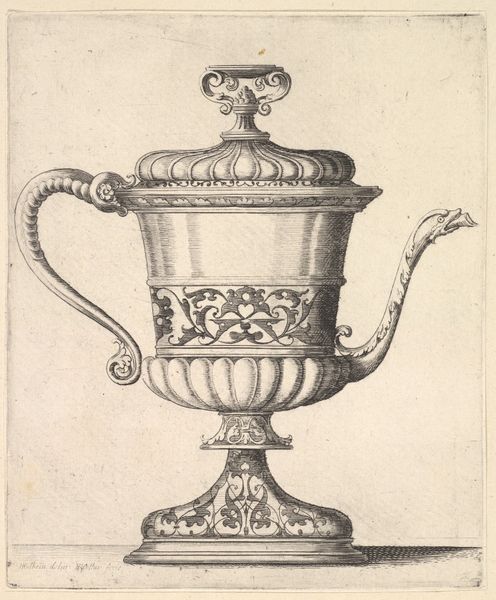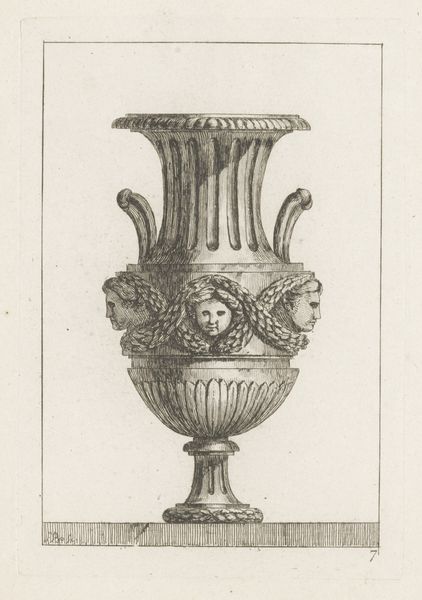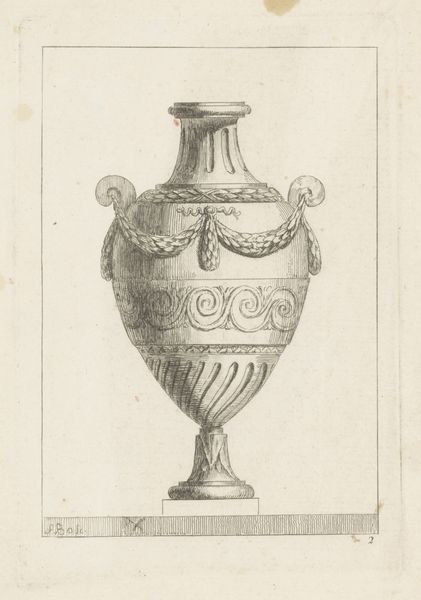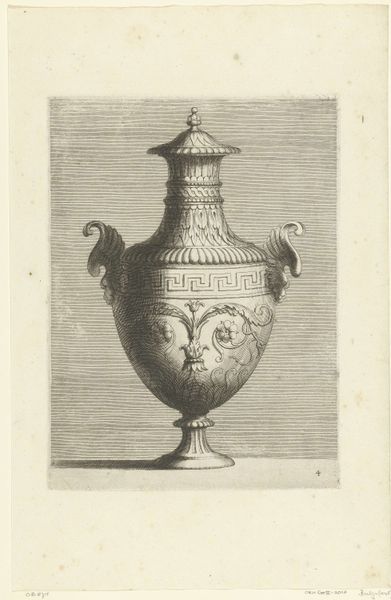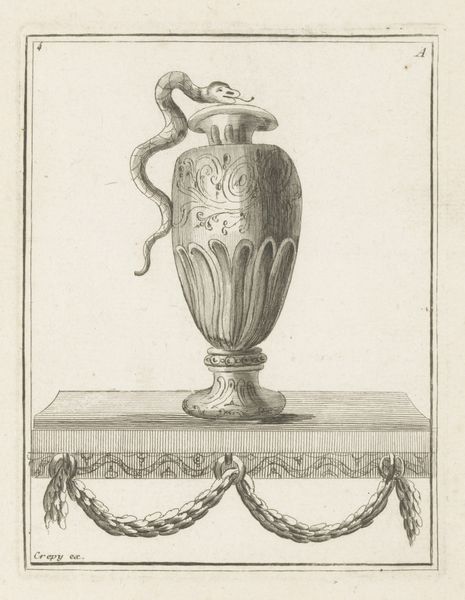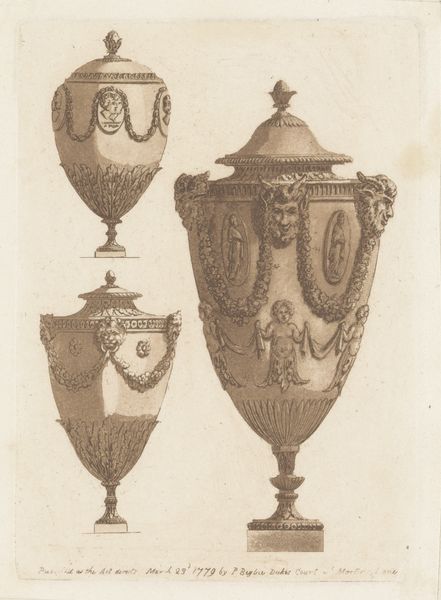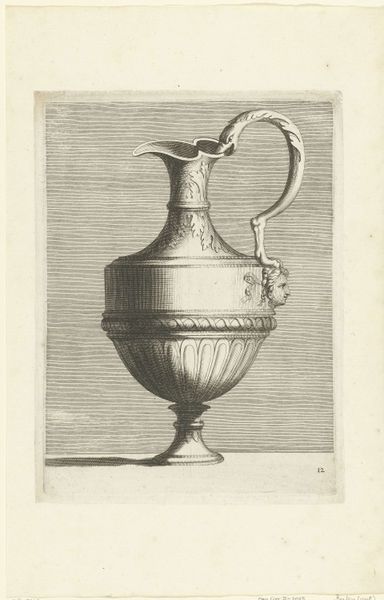
Dimensions: height 173 mm, width 110 mm
Copyright: Rijks Museum: Open Domain
This ‘Geornamenteerde kan’ or ornamented jug was produced by Georg Friedrich Schmidt in 1774, using etching, a printmaking technique. The jug is depicted with incredible detail, and it's clear that Schmidt was attentive to the ways in which this kind of object was produced. To create an etching like this, an artist covers a metal plate with a waxy, acid-resistant ground. They then scratch an image into the ground with a pointed needle, exposing the metal beneath. When the plate is dipped in acid, the exposed lines are eaten away, creating an incised design. The deeper the lines, the more ink they hold, and the darker they appear in the final print. Schmidt uses this technique to great effect here, varying the weight of the lines to suggest light and shadow, and to create a sense of volume and depth. The result is a print that captures the jug's material qualities, its smooth, reflective surface, and its intricate ornamentation. It's a testament to the skill of both the object’s maker, and Schmidt himself, who could translate the jug's three-dimensional form into a two-dimensional image.
Comments
No comments
Be the first to comment and join the conversation on the ultimate creative platform.
